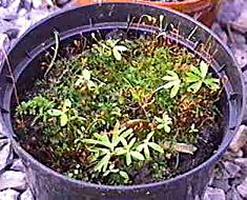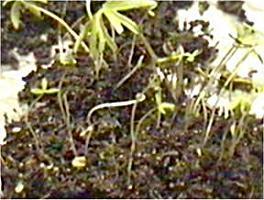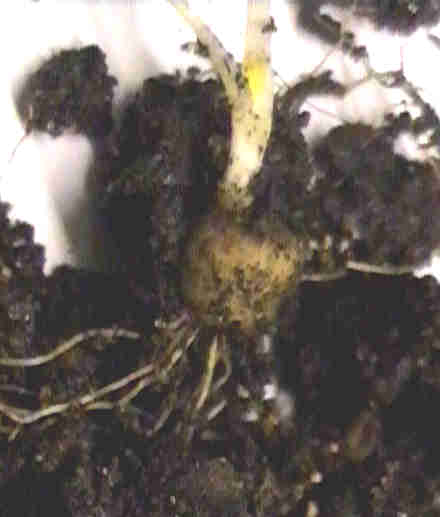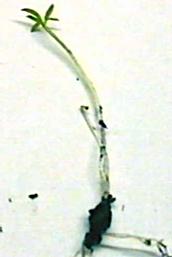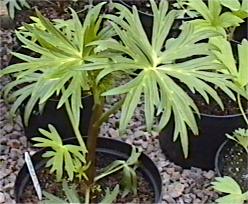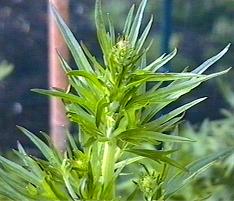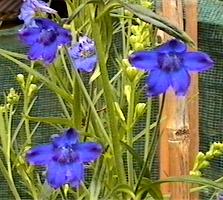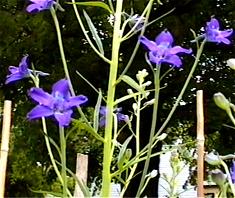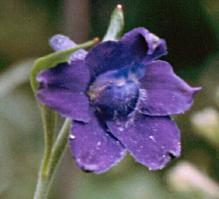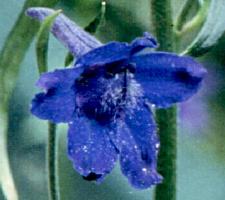| North
American Delphinium Species 2b |
A guide to stages in seedling development
Nutall's larkspur is found is found west of the
Cascade mountain range and along the Columbia River Gorge region
in Oregon and Washington State according to "Flora of the
Pacific Northwest" by Hitchcock & Cronquist, 1976.
Seed, collected from the Columbia River Gorge
region of the western U.S.A., was sown in multipurpose compost
and left exposed to the weather during winter. No germination was
noted that year but one plant was seen during the summer after a
second winter. The picture shows the pot during January of the third winter, with several delphinium seedlings emerging from the
moss. Removing the moss revealed a large number of seedlings with
true leaves and roots growing from tubers.
One of the seedlings, presumably that seen
during 2000, had a root tuber about 10mm in diameter. The
remainder had very small root tubers. These seedlings had
probably germinated in the spring of 2000 but had not been
noticed, perhaps because they did not develop any true leaves
before becoming dormant.
Seedlings were carefully extracted and
re-potted in fresh compost. All seedlings grew quickly and, by
late March, the largest was developing a flower stem. Plants were
re-potted into 1litre pots for flowering.
Leaves on the stem became larger and more
serrated as the stem developed and thickened. The plant from the
largest tuber had a stem approximately 8mm in diameter. Plants
from tiny tubers had slender (2-3mm), stiff stems.
Flower spikes developed in May/June with small florets (33mm across) held on long
pedicels giving a broad-based tapering bloom.
Plants that grew from tiny tubers were flowering for the first
time with about 20 florets in the bloom.The largest plant,
probably in its second flowering season, had 41 florets in the
bloom with pedicels 230 mm long at the base of the spike and was
1.35 m tall. Ten secondary flower stems developed from leaf axils
below the bloom. This doubling of the number of florets in the
bloom of older plants is also seen in D. trollifolium.
Flower colour varied from purple to deep violet
with some plants having flowers of a brilliant gentian blue. A
notable feature of the flowers is that the lower pair of petals
(honey leaves) completely obscure the anthers. These also have
beards of whitish hairs.
The flowers were very attractive to bees and a
large amount of seed was obtained. The plants became dormant
after setting seed.
| Species identity There are some inconsistencies
between the features of D. nuttallii described
in the Flora cited above and the plants grown. In
particular, the Flora indicates that the raceme is
compact with pedicels often < sepals, which was
certainly not the case. It seems unlikely that this was a
consequence of the cultivation method because blooms of D.
burkei grown under identical conditions were compact
with florets on very short pedicels. |
